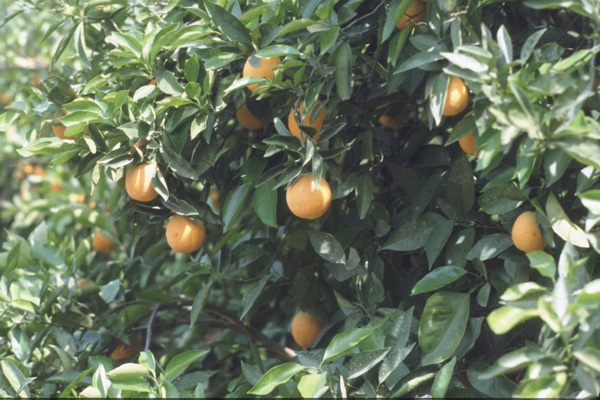
The Texas Department of Agriculture has extended an emergency quarantine on the movement of citrus stock from portions of Hidalgo County until 5 p.m. Friday, Jan. 27.TDA officials have scheduled a meeting with Valley citrus growers this week to review quarantine procedures.Citrus greening, first identified in 2005, has destroyed hundreds of thousands of acres of citrus in Florida.

The Texas Department of Agriculture has extended an emergency quarantine on the movement of citrus stock from portions of Hidalgo County until 5 p.m. Friday, Jan. 27, so further testing can be completed on citrus groves in close proximity to a tree infected with citrus greening disease that was discovered in a commercial grove in San Juan earlier this month.
The initial five day quarantine imposed last week ended Friday, Jan. 20, to allow TDA and USDA-APHIS inspectors time to survey the area in search of additional instances of infection. TDA officials have scheduled a meeting with Valley citrus growers this week to review quarantine procedures and to communicate state and federal efforts to contain the disease to minimize chances of it spreading.
The Asian citrus psyllid, which is responsible for spreading the disease, has long been detected in Texas, but confirmation of citrus greening disease in the Valley this month represents the first confirmed report of the actual disease in the state. Citrus greening, first identified in 2005, has destroyed hundreds of thousands of acres of citrus in Florida. It also has been found in Georgia, South Carolina and Louisiana.
“The temporary quarantine was extended to allow us the chance to complete our survey of the surrounding area in an effort to contain the disease and to prevent it from spreading,” reports TDA’s Bryan Black.
The disease poses no threat to human health as it affects only the tree and not the fruit. But TDA officials say even fruit being carried outside the quarantine area must be free of leafy material.
“It’s hard to say where this instance of citrus greening originated. We know the Asian citrus psyllid populates the Rio Grande Valley and can be found in abundance across the border in Mexico. But the biggest cause of concern are homeowners buying citrus plants over the Internet and having them shipped in to plant in their backyards and gardens,” reports Dr. Robert Mangan at the USDA Subtropical Research Center in Weslaco.
Mangan and Citrus Mutual President Ray Prewett say a multi-year comprehensive psyllid eradication program across the Valley has resulted in historically low numbers of pysllids in recent months. The program involves plant treatment several times a year, especially during periods of citrus plant dormancy.
“This generally occurs in the winter months and already a second window for treatment is opening,” Mangan adds.
Prewett says he is optimistic citrus greening can be controlled and managed and emphasizes the disease is not harmful to humans and the fruit is safe for consumption. The quarantine only prohibits the movement of citrus stock outside the quarantine area.
TDA officials are scheduled to address growers Tuesday morning at 10 a.m. at the McAllen Chamber of Commerce, 1200 Ash Ave., in McAllen. The agenda calls for a discussion of measures to control plant disease and ways to protect the state’s citrus crop. Texas Agriculture Commissioner Todd Staples will be present to address growers at the meeting.
Following the 10 a.m. press conference, citrus growers and nursery operators will be invited to tour the grove where the infected tree was discovered. For more information on citrus greening, or to report a tree that may have the disease, visit www.saveourcitrus.org.
About the Author(s)
You May Also Like





